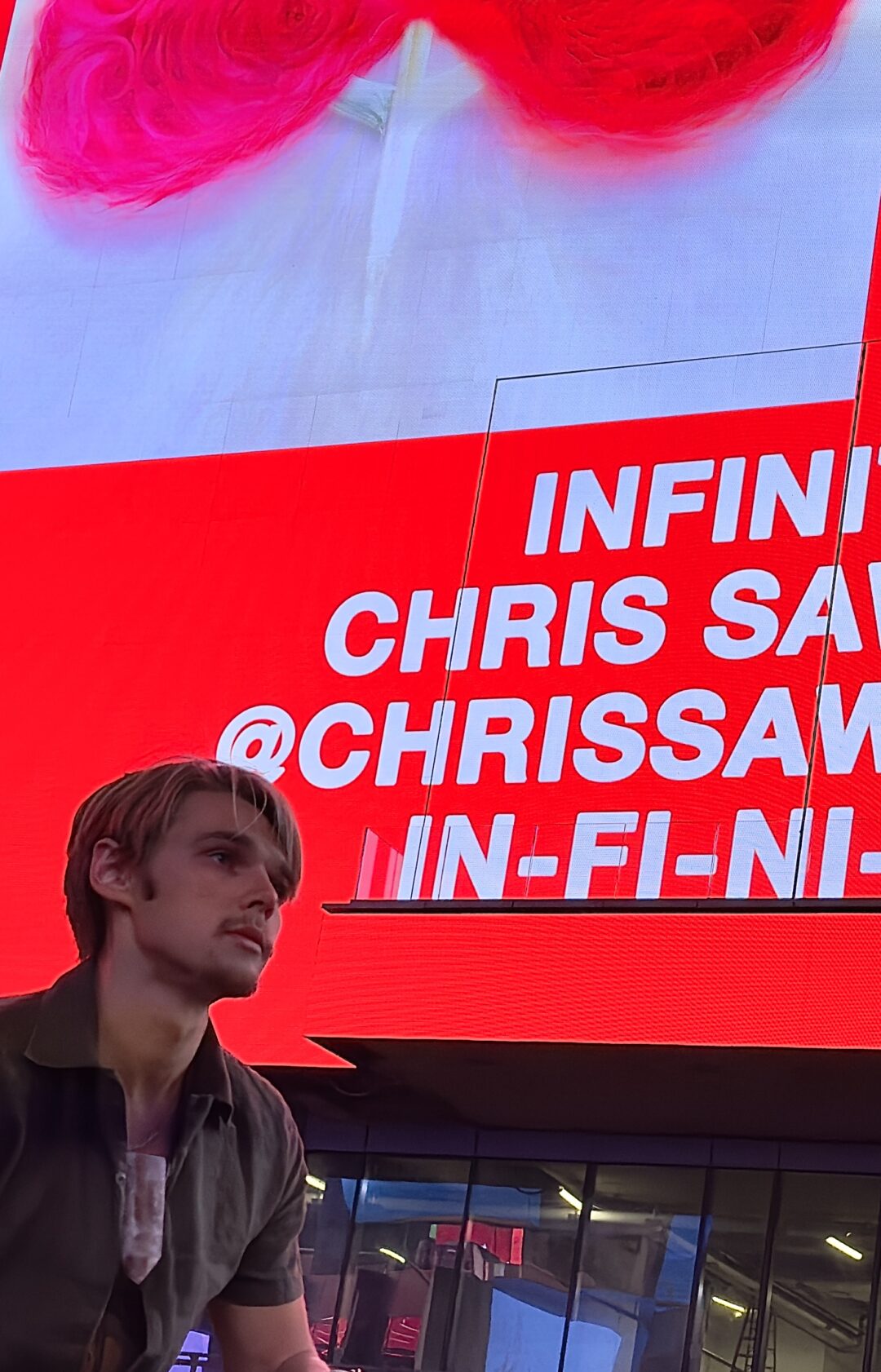mothshade’s debut album LIMINAL marks a bold shift in creative direction, as the award-winning composer brings vocals into the mix for the first time. Known for crafting intricate, atmospheric instrumentals, the artist has embraced lyrical expression while maintaining a raw, textured sound. In this interview, mothshade discusses the challenges of balancing industrial grit with programmed feminine vocals, the impact of artists like Nine Inch Nails and Hans Zimmer on their sonic choices, and the cathartic process of exploring darker emotions through music. They also share insights into their DIY approach to instrument-building, the role of science in composition, and how life as a stay-at-home parent fuels creativity.
mothshade, welcome to A&R Factory, thanks for sitting down with us to discuss your debut album, LIMINAL, which will be released under your new moniker on February 18th. We’d love to hear the story behind the spawning of your new project. How has your transition from purely instrumental compositions to introducing vocals influenced your creative style?
The transition was a very scary one, but a fun one. It was sort of terrifying to introduce lyrics and express things in that way instead of hiding behind only the music, but it was also extremely cathartic. I found the process very rewarding. In some ways, a voice is another instrument to enhance the puzzle of composition, but I think so many people resonate with vocals and lyrics that they immediately become the forefront of a song. It was a fun puzzle to work with; deciding when to focus more on the words and melody and pare back the instrumental, but still keep it true to the style that I prefer.
What was the most challenging aspect of blending the more aggressive, gritty sounds you create with the emotive feminine vocals you programmed, and how did you make sure the synthesis felt natural?
I tried for a long time to use my own voice and vocals, but I was never happy with how they mixed with the instruments. Maybe it’s just the introvert in me, but it just never felt right or how I heard it in my head. I had been listening to a lot of female-fronted music recently, and thought it might be interesting to explore that. I stumbled upon Dreamtronics’ Synthesizer V software, which works much like VST instruments that I’m used to working with – it works locally on my machine and all of their voice databases are licensed from the vocalists they portray, so it was a great solution for me. I was able to obsess over and micromanage things, and work in an iterative process, without having to subject a vocalist to doing 99 takes or something.
I absolutely loved the way the ‘softer’ vocals mixed with the gritty, distorted instruments. The challenging thing, I think, was to back off on effects a bit. There’s a lot of fuzz, distortion, or gritty character on the vocals along with gobs of reverb and delay – and I think it was challenging to find the right balance between the atmosphere I wanted and the audibility of the words. I tried to make sure the vocal synthesis felt natural by keeping intervals ‘reasonable,’ and modulating all of the performance parameters throughout each song. None of the instruments really have any reverb or delay and are very ‘up front’ in the mix, which helps with the separation between the two and keeps them from fighting too much in your ears.
I would sing the parts myself, in my natural range, to make sure I didn’t program something wildly difficult that a vocalist couldn’t reasonably perform. This helped me to sort of keep a reality check on my programming. The software has a lot of parameters for editing the performance – such as adding tension, breathiness, and changing ‘articulations.’ It was very similar to using an orchestra sample library – which I am pretty familiar with.
You’ve cited influences such as Nine Inch Nails, Massive Attack, Tool and Hans Zimmer. In what ways did these diverse artists impact your decisions regarding textures and atmospheric depth on LIMINAL?
I listen to a wide range of music, but those artists (among a couple others) have been my core influences for a very long time. I really love film scores. I think they all have a tremendous impact on my musical decisions. I love how Nine Inch Nails can just have a cacophony of layers going on at the same time that all interlock – but also sometimes just a single instrument and still have that enormous weight. Same with Tool – utilizing odd-meters and crafting songs in an atypical structure, balancing emotional weight with sonic weight. Composers like Hans Zimmer, Harry Gregson-Williams, Johann Johannsson… They have massively influenced the way I approach adding texture and depth; sometimes focusing on just adding tension or utilizing a single motif in different ways. I think any musician should study a few film scores to learn how sound design can interlock with emotional messaging.
You’ve mentioned that the lyrics touch on self-reflection and acknowledgement of less flattering traits. How do you approach putting these personal themes into words when you’re used to expressing yourself through purely instrumental work?
This was by far the most challenging aspect of the album. I fretted for a while before even letting my wife hear what I was working on. I wanted to express some deep feelings, and for this album, a lot of them are negative or sort of dip into the negative space a bit. It was difficult to craft words that could get these ideas and feelings across, in a blend of eloquence and directness. There was a lot of thought put into each aspect, and it all boiled down to how things affected the emotional pull of the track and the album. “How does this word affect the message? If the melody moves up or down on this word, or that word, does that affect the emotional pull? If I add a harmony, how does that change the feel?”
I loved the intricacy of it. Maybe there’s some thought I put into it that nobody else will ever notice, but I had such a fulfilling time doing it this way. I’m very proud of it.
It is beyond impressive that you’ve engineered your own pedals and instruments for the album. Could you talk about the process of building those tools and the kind of sonic character they brought to your music?
Sure! There are five ‘homemade’ things I used on the album. The first is a percussion instrument I built for myself. I called it the ‘Industrial Greenhouse’ and it’s based on Folktek’s Luminist Garden. It’s a 3D printed enclosure with a metal bar and used guitar strings sticking out of it. There’s a microcontroller and some analog circuitry in it that takes the sound from two piezo-discs and amplifies and cleans up the signal, runs it through a delay, reverb, and filter, and sends it out through a ¼” jack. If you turn the delay’s feedback up to 100%, the delayed signal becomes an infinite loop. So I can set the tempo and tap on the box, or flick the strings, or hit it with some other object – and the sound will get picked up and start looping. It’s a very fun and interactive way to add some unique-sounding percussion.
The other items are effects: a transistor based fuzz that sounds wild, chaotic, and absolutely broken. I love it and used it a ton; a bass envelope filter based on Guyatone’s BR2, which is an old discontinued auto-wah that has a wonderful gritty character to it; another fuzz but with a voltage bias knob and extra diode clipping stage, using old-stock Soviet diodes; and a little box I made to replicate the lo-fi filtering and clipping of a 70’s cassette deck I’ve used before.
As an award-winning composer and a stay-at-home dad, how does your daily life inspire or affect your creative output, and does domestic life present any unexpected sparks for your music?
I was terrified when we had our child that all of my creativity would just vanish, or that I wouldn’t ever have time to accomplish anything on that front. Clearly those fears were unfounded, and I actually think it’s made me more creative. I feel more emotionally connected to myself. That was certainly an unexpected spark. It also just depends on the day. Some days are good days, and I feel very fulfilled and accomplished. Other days, I bang my head against an open Cubase project for a while and then delete it and go to bed. Something that does really help in those moments is taking the dogs for a walk around the yard, or playing with our child in between naps. It’s such a basic concept but for a lot of creatives I think it gets forgotten: sometimes you need to take a couple of hours and walk away; enjoy something non-musical and come back later.
In terms of your composition process, do you find your fascination with electronics and science impacts the way you develop harmonies, rhythms or melodies within your tracks?
I guess I hadn’t thought of it that way, but I suppose so! At some point, music is really just math, right? Sound frequencies playing at different intervals which can either sound pleasing together or displeasing together. I like the dissonance and unpredictability. The instruments on this album are almost all analog – guitars through mostly analog effects pedals, analog synths… And that brings a tiny bit of unpredictability. Sometimes the synths are slightly out of tune because they’re physically warmer than they were the previous day or whatever. For me, that’s a feature – not a bug.
There’s not much of it on this album but I also really love poly-meter stuff. Things that sync up for one measure and then drift apart, then sync up again… It’s like two orbiting bodies: mathematically, they’re going to pair up with each other in between passing each other.
I think these concepts definitely impact how I develop rhythms, but I haven’t really thought of how they might affect how I write melodies or harmonies.
LIMINAL highlights reconciliation with darker aspects of yourself. Would you say this cathartic element adds to your determination to keep pushing musical boundaries, and how do you see mothshade evolving as you continue to explore your own creative honesty?
Yes, I would absolutely say that. It was very satisfying to put together these tracks, and hopefully in a way that resonates with other people. At this point, I’m not sure exactly how mothshade will evolve but I know that it will. I have a few ideas of how to take things in a different direction and focus on different aspects of this sort of introspective honesty. I hope people will listen to this music and resonate with the overall message of reconciliation; and if they connect with some of the darker aspects, they will follow that journey to the release and acceptance of themselves.
Stream LIMINAL on all major platforms, including Spotify, from February 18th.
Follow mothshade on Facebook and Instagram.
Interview by Amelia Vandergast



